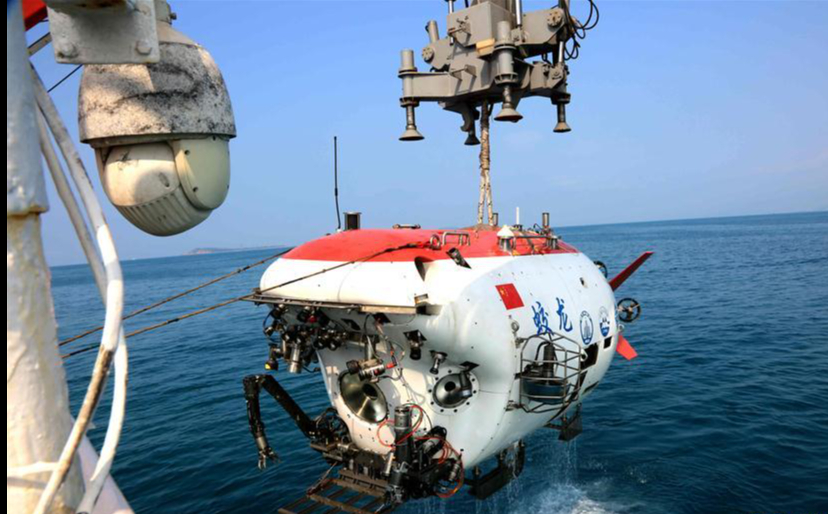China has executed its first manned deep-sea dive beneath the Arctic ice, marking a significant milestone in the nation’s 15th and largest Arctic scientific expedition. This mission also represents the world’s first coordinated operation between manned and unmanned submersibles in polar regions.
During the dives, researchers collected hundreds of deep-sea water samples and gathered critical data on biodiversity, ocean hydrography, sea ice conditions, and water chemistry. The expedition explored a vast area in the central Arctic, offering invaluable insights into deep-sea marine ecosystems and climate change.
The primary objective of this journey is to support data analysis and enhance our understanding of the Arctic’s rapidly changing environment.
A Powerful Fleet of Research Vessels
According to SCMP, China’s latest Arctic expedition assembled a cutting-edge fleet of research vessels, including the domestically built icebreaker Xue Long 2, the icebreaker Jidi, the research vessel Tansuo 3, and the research vessel Shenhai 1, which carried the manned submersible Jiaolong.
The fleet departed from Qingdao in eastern Shandong Province in July 2025, sailing northward to 77.5 degrees latitude to conduct marine environmental surveys and deep-sea dives. This expedition is considered China’s most extensive Arctic mission to date.
The mission concluded successfully as 100 researchers returned to Shanghai aboard the Xue Long 2. Notably, the upgraded Jiaolong submersible conducted China’s first manned dive in the ice-covered Arctic waters, collecting valuable data and specimens from extreme depths.

The research team expanded the traditional single-point operation mode of Arctic missions. They executed a coordinated dive with a remotely operated vehicle, addressing challenges such as underwater communication, positioning accuracy, and synchronized movement. This successful test marks a significant step toward more complex coordinated operations in future deep-sea expeditions.
Jiaolong Submersible Collects 183 Samples
Jiaolong is a Chinese-developed manned submersible capable of diving to depths of 7,000 meters. Following its upgrade, the submersible’s thrusters were equipped with four blades instead of the previous three. This change involved restructuring the thruster system to enhance power output.
A total of seven thrusters were installed on the submersible. During underwater operations, the crew uses a lever in the cabin to control the distribution of thrust from the seven thrusters. The upgrade of the propulsion system and battery pack played a crucial role in this transformation.
The front of the submersible features an array of cameras of various shapes, including high-resolution cameras for underwater filming and powerful underwater lights. To improve resource detection and environmental monitoring, Jiaolong’s lighting and observation systems were upgraded. Technicians replaced the existing camera equipment with ultra-high-definition (UHD) wide-angle video devices. Additionally, Jiaolong’s video transmission system was upgraded to a more efficient version, accumulating vital video data for future scientific missions.

In August 2025, China’s Arctic expedition team conducted a series of joint dives involving the manned submersible Jiaolong and a remotely operated vehicle, setting a new benchmark in polar research. During these missions, the two vehicles filmed each other underwater and collected valuable biological and geological samples from the Arctic seabed.
Over more than 10 dives, Jiaolong gathered 183 biological samples, including shrimp, sea spiders, and sea anemones, along with sediment, rock, and seawater samples for further analysis.
According to the National Deep Sea Center in Qingdao, the biological and geological samples collected during the Arctic dives are of significantly higher quality than those obtained through traditional trawling methods. These improved samples are expected to facilitate more accurate morphological identification and in-depth scientific research.
Furthermore, researchers from the Second Institute of Oceanography under China’s Ministry of Natural Resources employed AI tools and environmental DNA detection techniques to enhance the identification and classification of deep-sea marine organisms. This integration of advanced technologies marks a significant advancement in marine research.
BIG Launches Representative Office in China
On September 26, 2025, in Mengzi City, Yunnan Province, China, Big Group Holdings Joint Stock Company (UPCoM: BIG) officially inaugurated the representative office of its subsidiary, Big Expo.









































